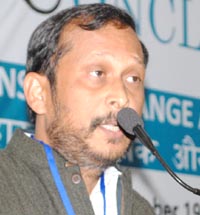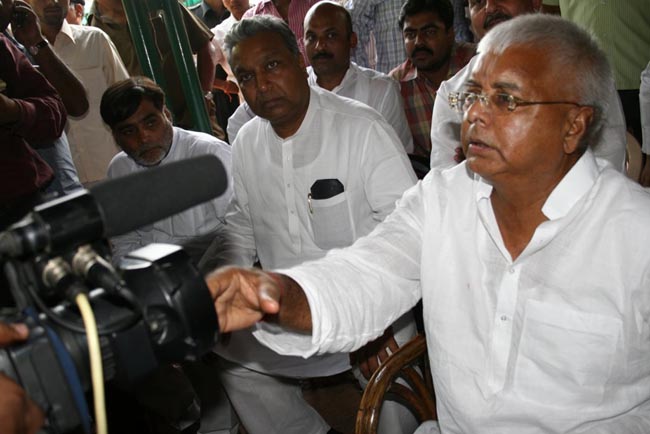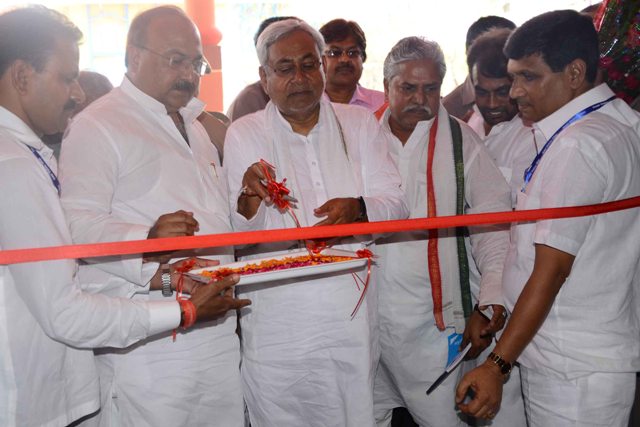 The year !990 was a defining moment in Bihar’s history. After over four decades of independence, political power changed hands from the upper castes who were an electoral minority. That year the irreversible sway of the numerically preponderant backward castes over the state’s politics became a reality. The year !990 was a defining moment in Bihar’s history. After over four decades of independence, political power changed hands from the upper castes who were an electoral minority. That year the irreversible sway of the numerically preponderant backward castes over the state’s politics became a reality.
Bihar has been a blessed state in the last two decades in another sense: there has been political stability. Prior to 1990, the non-Congress governments were short-lived; even the Congress governments, which held office for most of the period, witnessed huge turnover of chief ministers (with the exception of Srikrishna Sinha, the first chief minister of Bihar). The subsequent Congress chief ministers who had an extended run – like Dr Jagannath Mishra – were perpetually engaged in arcane shenanigans to survive in power. Not surprisingly, governance took a back seat.

In 1990, when Lalu Yadav came to power, he had a twin advantage over his immediate predecessors: first, he did not have a central high command keeping him under a leash; second, he did not have a political rival in the state to destabilize him. So he had the opportunity to completely harness his energy for good governance in the state. Did he do it? What was the outcome of his complete domination over Bihar politics for 15 years?
His successor, Nitish Kumar, has also had a similar advantage. He is the supreme leader of the party in the state and nationally (Sharad Yadav is just a ceremonial national head). He lords over the coalition partner, BJP, as well. He has been as secure in office as Lalu was before him. It means that he also has had the opportunity to completely devote himself for the uplift of Bihar. Has he succeeded?
How do we compare the record of governance of these two eminent political leaders of Bihar? In a way, it would be an unfair comparison as Lalu Yadav ruled for 15 years (in person and as a proxy for his wife) and Nitish Kumar has done just about half that period and is still going strong.
But it is inevitable that Nitish Kumar’s record will be assessed in the backdrop of Lalu Yadav’s achievements or the lack of it. And this is my precise assignment for this report. I had spent a decade at Patna working for two leading national dailies. But the 10 years that I spent in Bihar were the heydays of Lalu Yadav. So I had a ringside view of his administration. But by the time Nitish Kumar assumed office, I had left Patna. So my perspective on Nitish Administration is based on impressionistic account -- my occasional visits to Patna, feedback from the government officials, journalists and common people -- as well as published reports.

To me, the biggest difference between Lalu and Nitish is the intent – the desire for good governance.
Good governance was never Lalu Yadav’s idea of good politics. Every political leader naturally has the first priority to do everything to retain and survive in power. Lalu Yadav never believed that what we understand as development would fetch votes. He used to say that it was the upper class and middle class that hankered after the good roads, longer supply of electricity and the like, but his supporters were not bothered about it. “You people want to travel by car. So you want good roads. My people walk on foot. Whether a road is pucca or kuctcha matters little to them”, he told me once. Would not you change the lives of the poor for the better if you give them electricity at least for a few hours?, I asked. “If you give them electricity for two hours, they will demand for four. If you give them for four hours, then there will be a demand for eight-hour supply. Do I have enough electricity to meet their need? Why then rake this issue up? I represent the poor. And the poor people are quite happy with the lantern.” (incidentally, lantern is the election symbol of Lalu Yadav’s party).
Lalu Yadav’s guiding principle was – do not get into the development debate, do not provide fodder for the ‘revolution of rising expectations’.
Not surprising, he hardly attended office. All important files were brought to his residence for signature. The result was that Bihar was pushed back in the development radar.
The only semblance of governance in Lalu regime had to do with political consolidation. He ensured that the state power was used to make backward castes the most powerful political and social group in the state (by the end of his tenure, he just remained the leader of Yadavs as most other backward castes had turned their back on him). To win over the formidable support base of Muslims, Lalu administration ensured that communal riots, which were a recurrent feature in Congress regimes, were put down with a firm hand. And that was perhaps the only notable example of good governance during Lalu’s regime.
Next page...
|
